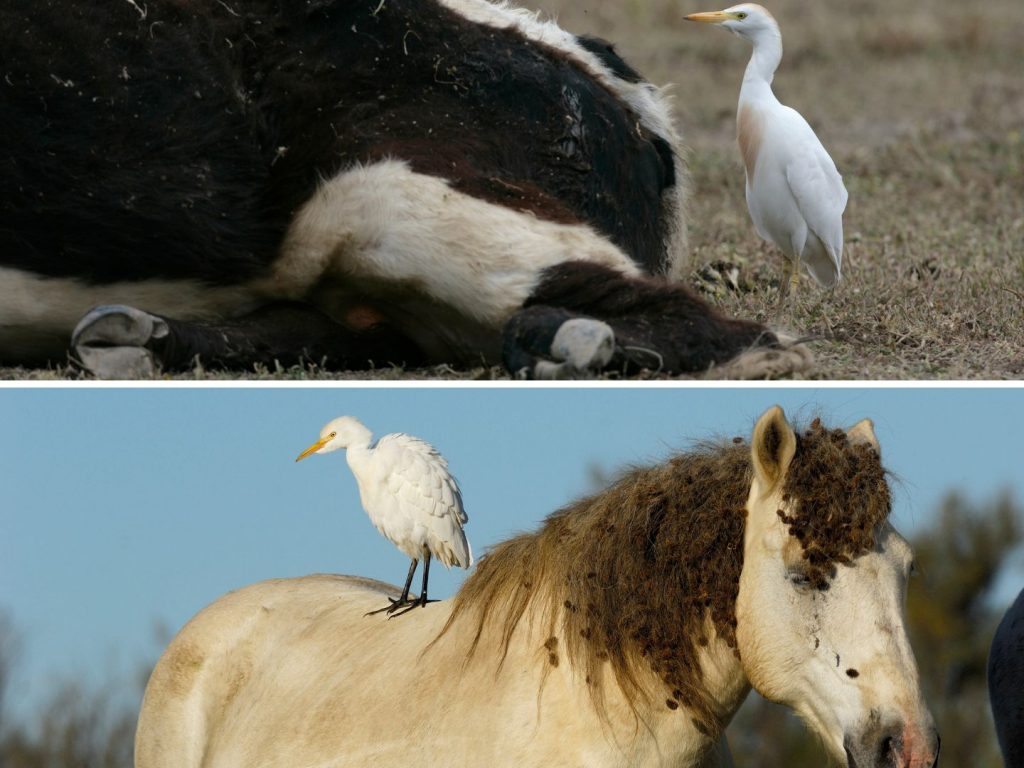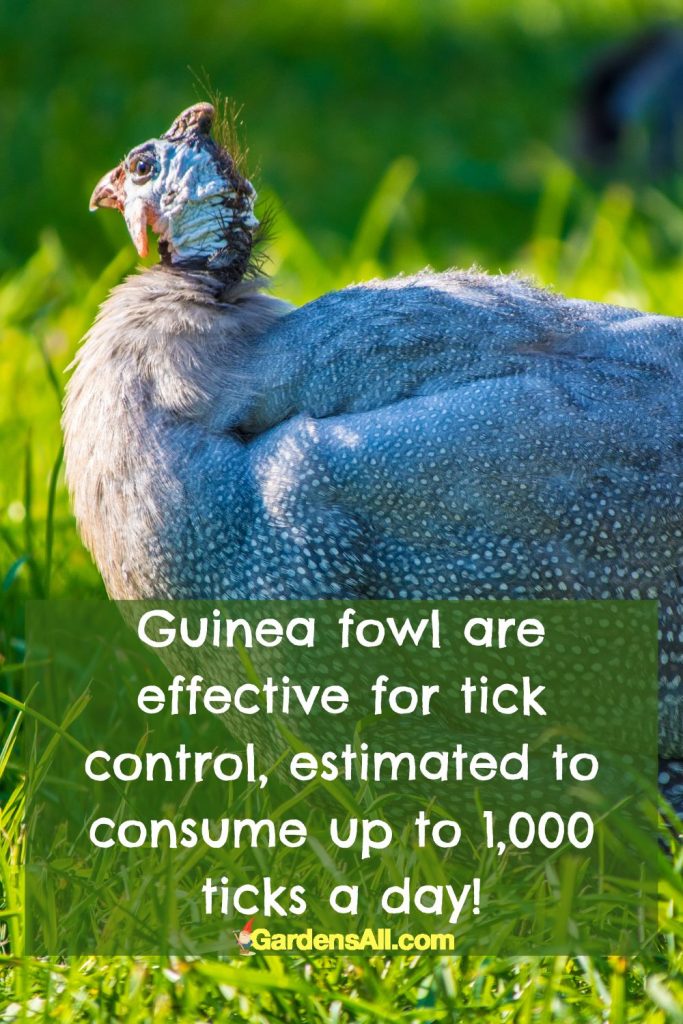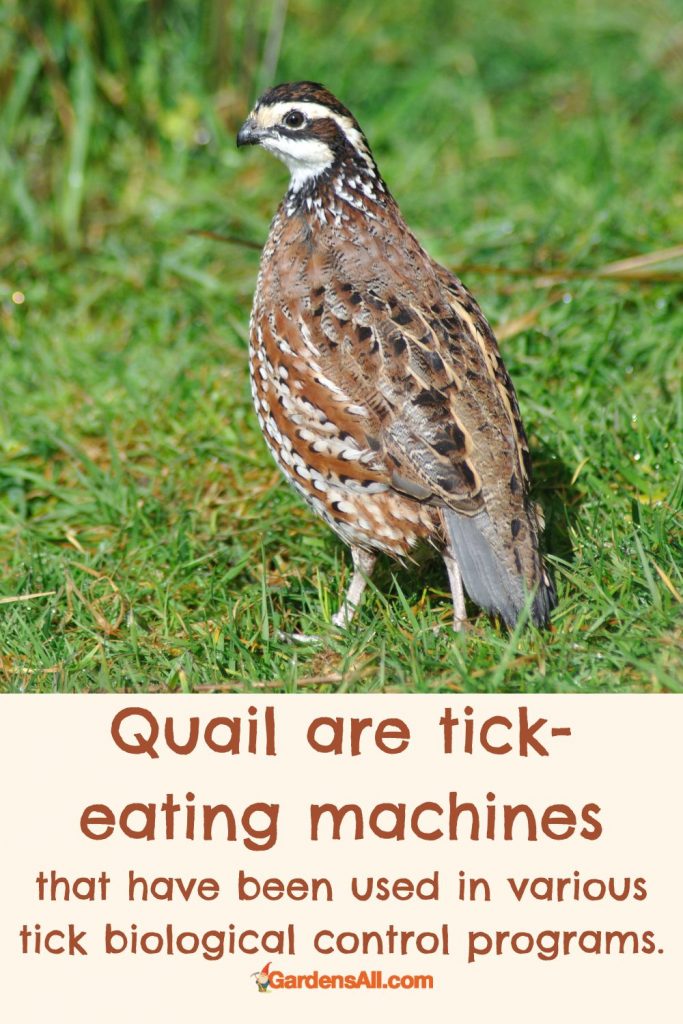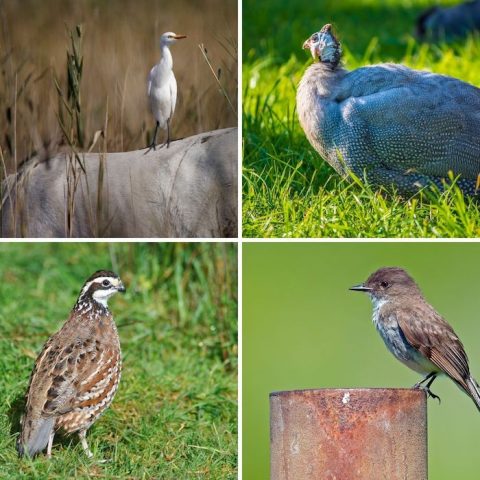If you live in the woods like we do, or around meadows, and you have animals, it can be super helpful to learn about animals and birds that eat ticks and fleas.
With concerns of lyme disease, anything we can do to reduce these pests naturally, is helpful. Knowing the animals and birds that eat ticks and fleas means you may be able to invite them to your yard by providing plants and habitats they like.

BIRDS THAT EAT TICKS
Wild Songbirds That Eat Ticks
The birds that eat ticks range from domesticated to wild, however more is known about the fowl than the songbirds that eat ticks. It turns out that research on the many types of birds that eat ticks is still in the early research stages, but we did find a few wild birds that are known to eat ticks.
Bird that Eat Ticks Include Ground Feeders Such as:
- Bluebirds
- Blue Jays
- Cattle Egrets
- Cardinals
- Eastern Phoebes
- Ground Finch
- Oxpeckers –
- red-billed
- yellow-billed
- Robins
See also: Birds that eat mosquitoes.
Fowl Birds That Eat Ticks
The most known and consistently reliable birds that eat ticks tend to be farm fowl. If you’re not in an area where you’re restricted by a homeowners association (HOA) rules, you might want to raise some of these birds in your backyard. Not only will the provide natural pest control, they can also provide eggs and meat .
Cattle Egret – Bubulcus ibis
These egrets are found in pasture and grasslands around — you guessed it — cattle, and also other hooved animals such as horses, and perhaps
In fact, these birds are indeed, fine feathered friends to cattle, for they perch on the backs of cows and pluck off the Lone Star ticks that hitchhike on cattle. This not only helps the cattle, but naturally aid in controlling this tick population habituated to the southeastern US.

Chickens – Gallus Gallus Domesticus
Chickens have long been used to control a wide array of bugs in farms of all sizes, as well as backyard gardens. Not only can these birds provide you with eggs and meat, but they are a wonderful way to control the amount of ticks in your yard.
What’s even better is that chickens are fairly easy to raise, and can eat up to 300 ticks in one hour. With that said, however, the average chicken consumes around 80 ticks an hour.
Chickens are fairly easy to raise, and can eat up to 300 ticks in one hour.
Ducks – Anatidae
Ducks are found just about everywhere, from coastlines to small streams. You may even see them in your yard from time to time. Ducks are omnivorous, meaning they feed on both plant and animal matter, and consume a wide array of fish, plants, and insects, including ticks. Ducks are often raised as pets, as well as for their eggs. They are another bird that is generally easy to care for, but they are known to make a mess with water.
Guinea Fowl – Numididae
Guinea fowls are considered the #1 tick-eating bird out there. They are one of the most effective birds for reducing the number of ticks, consuming as much as an estimated 1,000 ticks a day. That’s a lot of ticks!
The downside to having guinea fowls, however, is that they are known as rather loud and obnoxious birds that can be hard to contain. Some people consider the guineas screech to be an effect alarm system to alert them to problems.
So do your research on the negatives in raising Guinea fowl, and visit guinea fowl owners so you can have a chance to hear their screech to decide if that works for you and your setting.(https://thefreerangelife.com/5-reasons-not-to-own-guinea-fowl/))
REFERENCES:
- U. of Hawaii, Manoa study[1]http://manoa.hawaii.edu/hpicesu/papers/1992_The_Effectiveness_of_Helmeted_Guineafowl.pdf
- PoultryExtension.org[2]https://poultry.extension.org/articles/poultry-management/raising-guinea-fowl-in-small-and-backyard-flocks/
Guinea fowl are effective for tick control, estimated to consume up to 1,000 ticks a day!

Guinea fowl are effective for tick control, estimated to consume up to 1,000 ticks a day!
Quail – Coturnix Coturnix
Quails are rather small birds, but don’t let their size fool you. They are tick-eating machines that have been used in various tick biological control programs.
Quails are often raised for their meat and eggs, but can also be used to train hunting dogs. Quails are easy to raise, and require less work and space than chickens. They are also quieter than the guinea fowl, and can live nicely next to chickens.
Quail are tick-eating machines that have been used in various tick biological control programs.

Quail are tick-eating machines that have been used in various tick biological control programs.
TURKEYS –
- Wild Turkeys – Meleagris gallopavo
- Domesticated Turkeys – Meleagris Gallopavo f. Domestica
Turkeys are grown for commercial purposes, but can also be found in the wild. People often see them in open fields or in wooded areas, which is where they encounter the blood-sucking ticks. Instead of running away from these pests, the turkey will gobble them up. In fact, one adult turkey can consume 200 or more ticks every day. It is estimated that a turkey can consume 100,000 ticks in its lifetime.
How To Attract Turkey to Your Yard
Plant food plots near wooded areas with crops such as:
- Acorn
- Blueberries
- Crops like:
- corn
- soy
- Dogwoods
- Huckleberries
- Pecans
In addition, supplement with turkey bird seed mixtures formulated for turkeys.[3]https://mylandplan.org/content/how-attract-turkeys-your-land#:~:text=Turkeys%20love%20acorns%20and%20pecans,turkey%20sightings%20and%20harvest%20success.
We’re grateful to have wild turkey roaming our yard and woods. If you live near woods and meadows, you may be able to invite turkey to visit your yard by providing these plants and others they enjoy.
One adult turkey can consume 200 or more ticks every day.
Other Animals That Eat Ticks
Birds aren’t the only animals that eat ticks. In fact, the animal that is considered the biggest predator of ticks isn’t a bird at all; it’s the opossum! The opossum is a well-known tick eating connoisseur, consuming up to 5,000 ticks in one season!
Animals That Eat Ticks Include:
- Ants
- Birds / Fowl
- Frogs
- Insects such as:
- ants
- lizards
- spiders
- Opossum
- Rodents, like:
- chipmunks
- mice
- rats
- squirrels
- Rabbits
- Raccoons
So while there are many animals and birds that eat ticks, the volume of ticks consumed is less, as most of them are incidental. In other words, these animals and birds that forage on the ground tend to consume most of the insects they encounter, including ticks, but are not specifically in pursuit of them like the opossum.
Research on captive Virginia opossums estimated that opossums eat, on average, 5500 larval ticks (Acari: Ixodidae) per week.
SOURCE: Hennessy C, Hild K. Are Virginia opossums really ecological traps for ticks? 2021 Sep;12, PMID: 34298355

Research on captive Virginia opossums estimated that opossums eat, on average, 5500 larval ticks per week.
Research is on for Biological Tick Control
There hasn’t yet been much research for biological controls for tick management, including wild birds that eat ticks.
It makes sense because there’s not as likely to be many commercial funding sources for such research. It’s also a time-consuming and challenging kind of research to perform. I mean, it’s not easy to spot birds eating ticks! It would likely require some in-captivity monitoring of bird food choices.
However, research is underway on a number of predators, parasites, and pathogens for potential use as effective biological tick control and other pests.[4]https://extension.umaine.edu/ticks/management/biological-control/
Creatures and Animals That Eat Fleas
There are also other types of critters and animals that eat fleas, including ladybugs, spiders, lizards, frogs, and garter snakes.
If you have a flea problem, however, you may want to consider treating your yard with beneficial nematodes or organic pest control such as diatomaceous earth. Both of these options are the safer alternative to pesticides and chemicals, and are not harmful to people, pets, wildlife, or beneficial insects.
Other Biological Tick Control Methods in Research
Honorable mention as something to keep tabs of as more is discovered in research.
- Entomopathogenic fungi:
- Metarhizium anisopliae
- Beauveria bassiana
- Beneficial Nematodes
- Parasitoid Wasps of the genus Ixodiphagus
REFERENCE: Samish M, Ginsberg H, Glazer I. Biological control of ticks. Parasitology. 2004; PMID: 15938520.
Birds That Eat Fleas
While there aren’t as many birds out there that dine on fleas, there are a few that can help naturally control the flea population in your garden. Birds that eat fleas include grackles, robins, and starlings. These birds are common sights in backyards all over the world.
Ticks and fleas are two pests that can dampen enjoyment of the great outdoors.
One of the best defenses against these problematic creatures are animals and birds that eat ticks. Birds are natural predators of ticks, and can drastically reduce the number of ticks in your environment.
There are also many birds that eat mosquitoes. So invite more fine feathered creatures into your yard and it will help to reduce these annoying and detestable pests that plague you and your pets. And if you have concerns about birds eating some of your crops, such as if you’re growing blueberries, here are bird deflector tips we use to keep them from eating ours.
We are an online gardening publication sharing all things garden related! Including urban farming, family gardening, homesteading, gardening for profits, and more. We’re all about growth!
References

